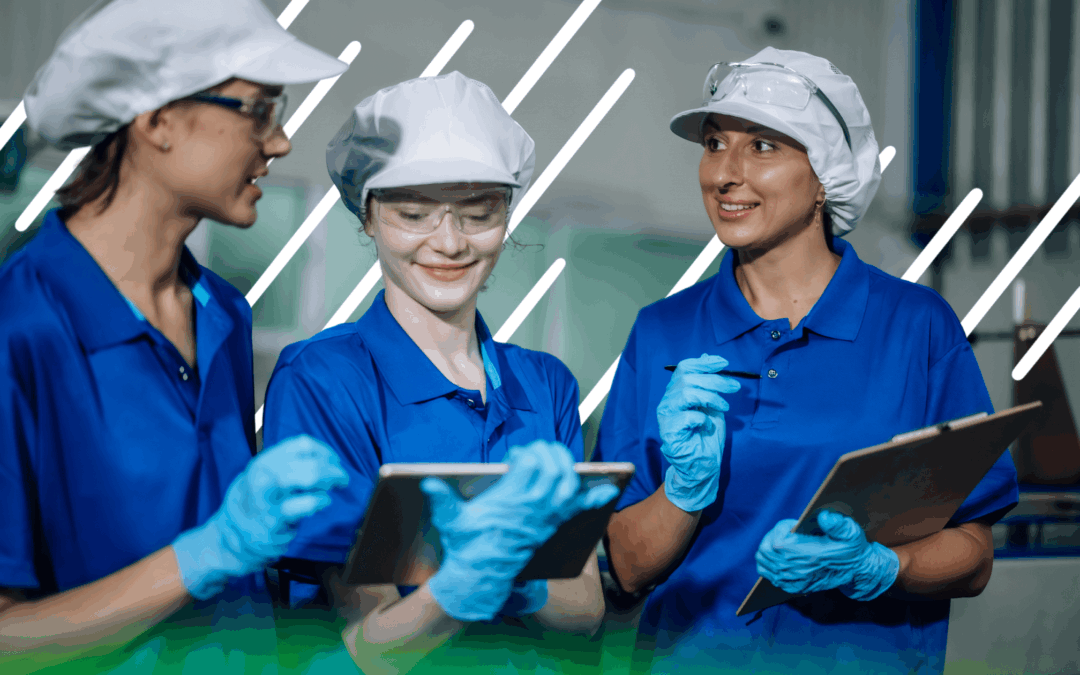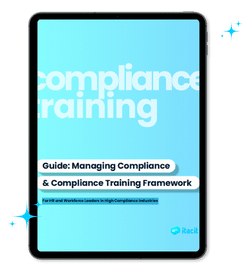Generative AI (GenAI) might sound like just another buzzword used among the tech elite, but the opportunities it poses are mighty—particularly when it comes to empowering frontline workers. With an estimated 2.8 billion frontline workers, they make up a significant portion of the global workforce, driving industries and economies around the world. Yet, they’re among the last to benefit from technological advancements, being largely overlooked as a workforce.
Until now, that is.
Frontline AI is reshaping the frontline workforce by addressing the simple question, “What if your frontline workforce had instant access to the right answers—every time?” Spoiler alert: these advancements are strengthening industries by delivering verified real-time knowledge, automating repetitive tasks, and improving critical decision-making on the spot.

So what is frontline AI, and how is it transforming frontline work?
Frontline AI is an emerging category within the broader scope of Artificial Intelligence (AI), designed to support frontline workers. This broad and diverse set of employees powers industries like healthcare, education, manufacturing, customer service, and logistics, where quick decisions and streamlined workflows are essential and at times even critical.
By addressing specific real-time challenges, frontline AI boosts productivity and accuracy across the workforce—freeing employees to focus on complex tasks that require human judgement and first-person interaction, while also reducing errors caused by human oversight. From direct customer management to supply chain logistics, frontline AI is using language models to reshape the way businesses operate at every level.
The knowledge gap problem on the frontline
What is the cost of information delays? Simply put: productivity, morale, profit, and safety.
Lack of immediate access to the right information, at the right moment, is a major roadblock for frontline workers. Some key challenges include:
- Untrained Fill-ins: Employees often have to cover shifts for absent coworkers, sometimes without proper training. In K-12 settings, substitute teacher stepping into a classroom without access to lessons plans or student records may struggle to keep students engaged and on track, leading to lost instructional time and frustration for both students and staff. In healthcare, a nurse unfamiliar with a new medical device may delay critical patient care.
- HR Bottlenecks: Workers frequently struggle to access information about their pay, benefits, or schedules, leading to repeated calls and emails to HR—creating unnecessary help desk loops and increasing frustration. According to a 2023 report by Forrester, over 50% of HR professionals say they spend too much time addressing repetitive inquiries that could be automated with AI-powered virtual assistants.
- Inefficient Processes: Without clear guidance, employees commonly waste valuable time troubleshooting systems and procedures on their own. In manufacturing, an assembly line worker unsure about a new protocol may slow production or make costly errors. Similarly, in field services, technicians working with unfamiliar equipment may take longer to diagnose and repair issues, leading to a wide range of issues like customer dissatisfaction and operational delays.
These may present like small impact inefficiencies, but over time they become significant and costly business challenges. According to Panopto, businesses lose $31.5 billion annually due to poor knowledge transfer.
Why knowledge workers and frontline employees are embracing GenAI
Frontline AI is as much about automation as it is about empowerment. With the right AI tools workers gain instant access to verified knowledge, improving efficiency at every level, and reducing stress. Here’s a glimpse into how AI is transforming industries:
Retail
AI-driven assistants and chatbots provide sales associates with instant product details, pricing, and stock levels, improving customer experience and shortening sales cycles. Walmart, for example, has implemented AI-powered tools to help employees manage inventory and answer customer inquiries in real-time.
Healthcare
AI helps nurses and doctors retrieve patient histories, recommended treatments, and compliance guidelines in seconds, reducing administrative workload and taking over routine tasks. According to a Deloitte study, hospitals leveraging AI-powered virtual assistants have reduced administrative burden by up to 30%, allowing staff to spend more time with patients.
Manufacturing
AI-powered predictive maintenance ensures machines are serviced before failures occur, minimizing downtime and safety risks. Automotive manufacturers like General Motors are using AI to monitor equipment performance and predict maintenance needs, reducing unexpected breakdowns and production halts.
And it doesn’t stop there. GenAI, a subset of machine learning, specifically enhances these capabilities with advanced natural language processing and automation, further streamlining operations. AI-powered knowledge bases can generate instant, context-aware responses to employee queries, allowing workers to quickly find the information they need without searching through manuals or waiting for manager assistance.
GenAI is not replacing workers—it’s empowering them
A smarter, more efficient frontline workforce
There’s a common misconception that AI will replace jobs. In reality, AI is a co-pilot, handling tedious, repetitive tasks so workers can focus on complex tasks, customer interactions, creative problem-solving, and critical thinking.
In customer service, for example, AI chatbots manage routine inquiries (like tracking an order), while human workers address complex issues that require empathy and nuance. This creates a more engaged, effective workforce—not one at risk of being replaced.
AI also enhances learning experiences and onboarding by providing interactive, on-demand training opportunities. Generative AI-powered simulations can help new hires practice real-world scenarios in a safe environment, providing valuable insights, accelerating their learning curve, and reducing errors in high-stakes situations.
The future of frontline AI
AI is no longer a futuristic, hypothetical machine learning technology. It’s here, driving real improvements across industries around the world. With the right implementation, businesses can bridge the knowledge gap, improve efficiency, and empower their workforce in ways that simply weren’t possible when we were dependent on human skills alone.
Generative AI is taking the lead in a fundamental shift in how frontline employees work, learn, and succeed. A 2024 survey by PwC found that 72% of business leaders plan to invest in AI solutions specifically to enhance frontline operations. And as AI continues to evolve, leveraging continuous learning to improve day-by-day, companies that embrace it will see stronger, more capable workforces taking their industries forward.
Are you ready to explore what Generative AI can do in your organization?
iTacit agents are ready to help you solve your biggest business challenges. Schedule a consultation today and visit our Frontline Feed to get tips on how to best support and evolve your frontline workforce.









